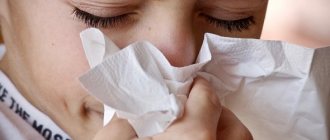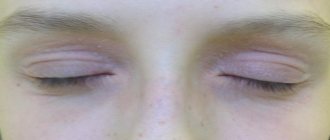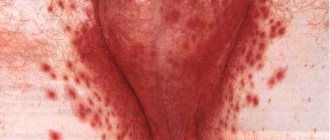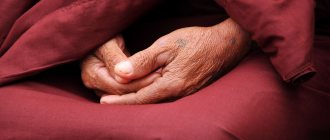Peeling of the skin represents an accelerated process of necrosis of body surface cells with their exfoliation, which significantly worsens the appearance of the skin, disrupting the natural balance of tissue regeneration. Due to the influence of many reasons, such changes are observed, contributing to excessive drying of the surface and active rejection of epithelial cells.
The visual characteristics of peeling represent the presence of small scales of the epidermis in certain areas of the skin, which manifests itself regardless of the type of skin, be it oily or combination. But most often people with dry skin suffer from such symptoms, when the root cause of peeling is genetically determined.
Make an appointment with a dermatologist by phone or by filling out the online form
| Select a clinic | Rash on back | Rash on cheeks | Rash on elbows |
Why does skin peeling occur?
A disruption in the natural balance of renewal of the cellular structures of the skin can be observed for a number of reasons, the impact of which provokes a pathological deviation. Among them, the following should be highlighted:
- changes in ambient temperature;
- manifestation of an allergic reaction to the external use of care products;
- existing skin diseases;
- unbalanced diet, which is associated with the lack of fat-soluble vitamins necessary for the skin;
- natural aging of the surface layer;
- hereditary predisposition.
Thus, the causal effect contributes to a change in the ratio of the rate of keratinization of epithelial cells with their rejection, which leads to the manifestation of typical signs of skin peeling:
- itching;
- change in skin turgor;
- the appearance of a hint of hyperemia;
- presence of relative pain syndrome;
- formation of small cracks on the surface.
Degrees of development
The disease can have different levels of severity. The moderate stage gives a feeling of tightness, the epidermis becomes rougher, irritated, and elasticity decreases. Very high severity leads to peeling of scales, areas of severe irritation, pimples, and itching appear on the face and body. Some areas, such as knees and elbows, tend to be particularly dry - these areas are particularly rough and may develop rough calluses.
The doctor will advise you on what exactly needs to be done - in some cases it is necessary to use not just care products, but medications. They should be prescribed exclusively by a specialist: even a pharmacist at a pharmacy does not always recommend suitable medications. An allergy that joins the irritation that torments you can lead to serious injury that will have to be treated longer and in more radical ways. The doctor will prescribe ointments that are suitable individually.
The principle of combating the manifestations of peeling
In certain cases, the appearance of pathological detachment of the epidermal layer develops against the background of the following diseases, which require specific treatment to eliminate the cause of the development of the pathology, and as a result, peeling of the skin disappears:
- seborrheic skin lesions;
- psoriasis;
- systemic lupus erythematosus;
- ichthyosis;
- dry erythema;
- ringworm and its varieties;
- scarlet fever;
- skin damage due to fungal infection and other conditions.
The development of pathology can be stopped on your own by using appropriate products for local application, maximally nourishing and moisturizing areas of the skin that are subject to the process of active exfoliation. In case of nutritional disorders, additional intake of fat-soluble vitamins helps restore the natural balance of cell layer renewal.
But if the condition worsens or the cause of the signs of pathology is unclear, you should consult a dermatologist who will competently conduct a diagnostic examination, which will help determine the most appropriate course of treatment. The main goal of diagnostics in this case is to exclude the presence of an infectious pathogen of any kind, which requires the subsequent use of specific treatment.
Useful information on the topic:
- Calling a dermatologist to your home
- Fungal infections
- Rash on the body
- Sexually transmitted diseases
- How to get tested
- Wart removal
- Removal of condylomas
- Tests for STIs
- Removal of papillomas
- Skin rash
- Pyoderma
- Skin structure
- Mushroom tests
- Diagnosis of sexually transmitted infections
What diseases cause skin peeling?
There are many reasons that cause peeling skin. These include both ordinary allergies and more complex skin diseases. Dermatological diseases can be infectious or non-infectious. These include:
- Hereditary disease ichthyosis;
- Diseases of internal organs;
- Psoriasis;
- Dermatitis manifested in seborrhea;
- Lupus erythematosus;
- Fungal diseases of an infectious nature;
- Syphilis in secondary manifestations;
- Pityriasis rosea;
- Scarlet fever;
- Dry erytherma;
- Mycosis and xerosis.
With ichthyosis, the skin has a characteristic grayish tint. Its surface is covered with small scales. The patient experiences discomfort. His skin is peeling and itching. For this disease, no chemicals should be used. Even regular soap causes redness and irritation.
The main causes are sunburn, infections, HIV problems, dry skin in psoriasis, and skin injuries. Medicines play an important role. Seborrheic dermatitis occurs as a consequence of changes in the functioning of the skin. Sebum will be released in large quantities. This leads to progression of the disease.
Pityriasis rosea appears due to low levels of the body's immunity. This may be hypothermia of the dermis, insufficient nutrients. A cold or flu also worsens the condition of the body. It begins to react sensitively to external irritants in the form of soap, lotions, and other cosmetics. Cold wind, frost or hot weather increase pain.
Secondary syphilis appears as a skin rash. These invisible spots cause general malaise. The patient has a headache and a fever. Lymph nodes become larger. Peeling occurs suddenly. The deep layers need moisture. No amount of cosmetics can correct the situation. Treatment measures will give results if we find out the exact cause.
Treatment
Therapeutic treatment methods should be aimed primarily at eliminating pathogenetic factors.
Patients are shown sedatives (especially with intense chronic itching), emollients (to reduce dry skin, which is both a cause and a consequence of itching), topical distraction agents (cold lotions, menthol-containing products, etc.), antihistamines, which In the vast majority of cases, they are first-line drugs.
There are two generations of antihistamines: sedative (Suprastin, Tavegil, Diazolin, Diphenhydramine, Fenkarol, Fenistil) and non-sedating/weak sedative (cetirizine, levocetirizine, loratadine, desloratadine, fexofenadine, ebastine, rupatadine).
It is important to note that, despite the need to take sedatives, it is better not to use first-generation antihistamines (which have a sedative effect in addition to antihistamines). Firstly, sleep when using them is unphysiological (the drugs inhibit the REM sleep phase). Secondly, the multiple side effects characteristic of this group of drugs limit their use in a large group of patients with concomitant diseases. Therefore, it is better to use tranquilizers as sedatives, and when choosing antihistamines, preference should be given to second-generation blockers.
Cetirizine occupies a special place among them.
What tests need to be taken for peeling skin?
Deterioration of the condition of the skin can occur as a result of the use of bad cosmetics. In this case, it is enough to change your skin care system. But if the reasons are deep-rooted, then you must undergo a series of tests:
- General blood test. Necessary for identifying problems of an infectious nature, vitamin deficiency and anemia. This type of diagnosis allows you to identify helminths. They have a toxic effect on the body. This leads to deterioration of the dermis;
- Complete (biochemical) blood test. Its results make it possible to identify disturbances in the functioning of internal organs. You can find out what elements the body lacks for full development. For example, vitamins A and B affect skin condition. Their lack leads to flaking and dryness. Poor functioning of the kidneys, liver, stomach and all parts of the gastrointestinal tract also negatively affects our face, chin and other areas of the body.
- Blood test for general immunity level and determination of allergic reactions. A good allergy test can accurately find a specific allergen;
- Mycological examination. Prescribed to identify fungal infections in seborrheic dermatitis and pityriasis rosea;
- Histological examination. A scraping of the skin is taken in advance.
If a patient is suspected of having hormonal disorders, the doctor will refer you for a consultation with an endocrinologist. This specialist will determine the lack of hormones by ordering tests to determine thyroid hormones, estrogens (in women), and DHEA. With such an extensive examination, all causative factors can be determined. Draw up the correct treatment regimen. Develop a number of preventive recommendations.
What diet is necessary for peeling skin?
Balanced hypoallergenic diets will help fight the disease. First of all, you need to identify those products that cause painful reactions. Eliminate chocolate candies and bars from your daily diet. Citrus fruits, raspberries, strawberries, pomegranate, melon, black currants can also cause dryness. Honey, fish, nuts, mushrooms, cocoa, caviar are included in the list of such products.
Salads seasoned with vegetable oil have a healing effect. You should include porridge, eggs, dairy products, carrots, tomatoes, liver, and seeds. These products help increase the level of vitamins A and E. The lack of vitamin B can be compensated by unrefined cereals, green vegetables, avocados, bananas, carrots, walnuts, and cod fish liver.
Peeling of the skin due to gastrointestinal diseases
Painful signs associated with disturbances in the functioning of the gastrointestinal tract are immediately reflected in the condition of the skin:
- Gastritis and stomach ulcers cause acne, unnatural skin color, acne scars, greasy or dry skin;
- Diabetes, pancreatitis lead to itching, dryness, allergic reactions;
- Hepatitis and liver pathologies become the causes of the formation of age spots, jaundice, pimples, blackheads, asterisks, furunculosis;
- Gallbladder diseases contribute to the development of pimples, blackheads, jaundice, age spots;
- Duodenal ulcers, dysfunctions of the small intestine manifest themselves in unhealthy complexion, pimples, acne, allergic disorders, sagging, dryness;
- Constipation, diarrhea, disturbances in the functioning of the large intestine lead to fungal infections, sagging, dryness, acne, pimples and allergic spots.
If painful changes are detected, you should reconsider your diet. Consult a doctor for help, create an individual digestive program.
Common symptoms and manipulations in dermatology:
- Skin rashes
- Calling a dermatologist to your home
- Itching in the urethra
- Itchy skin
- Skin rash
- Prevention of casual sex
- Skin neoplasms
- Pyoderma
- Pityriasis rosea
- Streptoderma
- Scabies
- Peeling skin
- Fungal infections
- Skin infection
- Pus on the skin
- Blisters on the skin
- Papillomas on the foreskin
- Sexually transmitted diseases
- Skin structure
Itchy skin on the body
For some people, itchy skin is a constant struggle. It's difficult to determine what causes this.
Itchy skin may be the result of a rash or other skin condition. It may also be a symptom of a more serious condition, such as liver disease or kidney failure. To alleviate this situation, it is important to identify the problem and address the root cause.
Skin rash and itching
Itching is one of the most common symptoms of many skin problems. It is an important organ that acts as a barrier to protect the inside of the body.
The skin is filled with special cells of the immune system that provide the body's protective functions. They help protect the skin and body from viruses, bacteria and other hidden threats.
When skin cells detect suspicious substances of any type, they trigger an inflammatory response. This inflammation is called a rash or dermatitis.
There are different types of dermatitis. Immune cells in the skin may respond to systemic infections or skin-related diseases. Sometimes the rash is red, painful and irritating, while others may cause blisters or pimples.
A person may itch completely or only in certain places. People may also have dry, cracked, or flaky skin.
Dry skin
Dry skin is one of the most common causes of itching. If a person does not notice bright red bumps or sudden changes in skin condition, the most likely cause is dryness.
Environmental factors that can cause skin dehydration include excessively hot or cold air, air with low humidity, and excessive washing. This problem can occur in any age group, but as we age, the skin becomes thinner and drier.
A good moisturizer will usually help relieve this discomfort. Severe dryness can be a warning sign of dermatitis. You may need to see a dermatologist for relief.
General signs and symptoms:
- Rough, flaky, or flaky skin everywhere
- Severe itching
- People with darker skin are gray or whitish
- Cracks that bleed easily
- Chapped lips.
It is important for people to seek help for dryness, as cracks can allow bacteria to enter the skin. Red, painful spots are usually an early sign of infection.
Your dermatologist may prescribe a special moisturizer that is applied throughout the day or a topical medication that is applied directly to the skin.
Other common causes
eczema
Eczema or atopic dermatitis is the most common skin dermatitis in children. The American College of Allergy, Asthma and Immunology says eczema affects one in five children, but only one in five adults.
The cause is due to damage to the skin barrier. As a result, the skin dries out and becomes sensitive to irritation and inflammation. Irrigation is important.
The good news is that eczema usually goes away with time. However, people with this condition should exercise caution as they are more susceptible to skin infections.
allergy
Irritation and allergic reactions can also cause itchy skin. Allergic contact dermatitis occurs when the skin comes into contact with allergens.
The allergy causes a red, itchy rash that may include small blisters or bumps. A rash occurs when the skin comes into contact with an allergen, which is a substance that attacks the immune system, though. There is usually a period of time, usually even several days, between the first contact with an allergen in life and the appearance of the rash. After the next contact the reaction will be much faster.
Contact with clothing, pets, chemicals, soap, poison ivy, or cosmetics can cause allergic reactions. Food allergies can also cause itchy skin.
Common allergic reactions to nickel. When people come into contact with jewelry containing even small amounts of nickel, the skin at the site of contact may appear red, bumpy, itchy, and swollen.
If people are allergic to a certain substance, one of the easiest treatments is to avoid that food or substance. Medicinal ointments can help get rid of the rash.
Measles
Hives are an inflammation of the skin caused by the body releasing a natural substance called histamine. This may cause swelling of the skin.
There are two types of hives. Acute form Illnesses usually occur after exposure to allergens, such as certain foods or medications. It can also be caused by non-allergic causes such as hot or cold weather, sun exposure or exercise.
Chronic urticaria Not due to a specific factor that makes allergy research usually useless.
This may take months or even years. Symptoms may be itchy and painful, but are not contagious.
The American College of Allergy, Asthma and Immunology estimates that approximately 20% of people will experience hives at some point in their lives.
other reasons
Itching may also be due to parasites such as hookworms, bed bugs, mosquitoes or lice. Fungal infections such as athlete's foot can also cause itching in and around the toes.
More serious illnesses may cause itching. Conditions such as diabetes, nervousness, and shingles can cause severe itching.
Itching is also called chronic renal failure (CRF). Uremia is a disease that occurs when the kidneys are severely damaged and cannot remove toxins from the body.
One of the many symptoms of uremia is itching, which is usually worse at night. These sensations usually affect the back, arms and abdomen.
treatment
The treatment plan depends on the cause of the problem. For people with dry skin, a good moisturizer may be the best solution.
For people with eczema, dermatitis, hives, or other conditions, a dermatologist may recommend applying a corticosteroid cream directly to the skin to relieve itching. Topical calcineurin inhibitors and oral antihistamines may also help provide relief.
Oral antihistamines such as Zyrtec, Claritin, and Benadryl are common antiallergy medications.
If there is a reason to avoid taking medications, alternative treatments may be recommended for patients with psoriasis or kidney failure. One of the treatments is phototherapy or phototherapy. Treatment involves exposing the skin to specific wavelengths of ultraviolet light to reduce itching.
Personal hygiene measures
- Use a high-quality moisturizer and apply it at least once or twice a day
- Apply an anti-itch ointment such as hydrocortisone
- Apply a cold, wet compress to the affected area
- Take a hot bath
- Choose mild soaps that do not contain dyes or fragrances, and use mild, unscented detergents for laundry
- Avoid substances that irritate the skin or cause allergic reactions, such as nickel, jewelry and wool.
Perhaps the most important maintenance measure is to avoid scratches. They end up causing further inflammation and damage to the skin and can increase itching.
If over-the-counter medications don't work, the rash spreads, or other symptoms occur, see your doctor to determine the cause of the problem.
Peeling skin in children
The thickness of the top layer of skin in children is less than in adults. And therefore the causes of dryness are much greater:
- Prolonged exposure to the sun;
- Cold wind currents;
- Negative effects of soaps, shampoos and other care products;
- Lack of vitamins;
- Constant nervous disorders and stress;
- Infectious problems.
Children often experience chamomile, lichen, fungal infections, dermatitis, and eczema. Cases of hereditary diseases cannot be excluded.
All this is a consequence of poor nutrition and hygiene procedures based on low-quality products. Only a specialist can identify the causative factors. Therefore, as soon as parents see characteristic changes in the condition of the skin, it is necessary to seek help from a dermatologist.
Application experience
Under our supervision there were 75 patients aged from 18 to 76 years (34 men and 41 women) with diagnoses of “atopic dermatitis”, “allergic dermatitis”, “chronic eczema in the acute stage”, “lichen planus”, “toxidermia” ( Fig. 2).
Rice. 2. Distribution of patients by nosology
All patients received topical and systemic therapy, including the antihistamine Cetrin (cetirizine) at a dose of 10 mg once a day at night. The duration of therapy is from 14 to 21 days, depending on the diagnosis. Patients assessed the effectiveness of itching relief using a point system: 0 points - no itching, 1 point - mild itching (present, but not bothersome), 2 points - moderate (bothering, but does not interfere with daily activity and/or sleep), 3 points - severe /intense itching (disturbs and interferes with daily activity and/or sleep).
The maximum reduction in itching intensity was observed within 3 hours of taking the drug in the first five days (Fig. 3).
Rice. 3. Average subjective assessment of the intensity of itching after using the drug
Subsequently, a decrease in itching or its absence was noted by the 10th day of therapy, with a simultaneous decrease in the clinical manifestations of the disease (Fig. 4).
Rice. 4. Dynamics of clinical manifestations
The results obtained demonstrate the high effectiveness of Cetrin (cetirizine) in the treatment of chronic and acute dermatoses. Cetrin (cetirizine) has a pronounced antipruritic effect, and also reduces other clinical manifestations of allergic dermatoses (infiltration, erythema). In addition, the drug can also be used for somatic diseases as symptomatic therapy.
Bibliography:
- Duncan WC, Fenske NA Cutaneous signs of internal disease in the elderly // Geriatrics. 1990. Vol. 45. No. 8. P. 24-30.
- Masmoudi A., Hajjaji Darouiche M., Ben Salah H. et al. Cutaneous abnormalities in patients with end stage renal failure on chronic hemodialysis. A study of 458 patients // J. Dermatol. Case Rep. 2014. Vol. 8. No. 4. P. 86-94.
- Abel EA, Farber EM Malignant cutaneous tumors // Scientific American Medicine / eds. E. Rubenstein, D. D. Federman. Section XII. New York: Scientific American, Inc., 1992. P. 1-20.
- Dangel RB Pruritus and cancer // Oncol. Nurs. Forum. 1986. Vol. 13. No. 1. P. 17-21.
- Bernhard JD Clinical aspects of pruritus // Dermatology in General Medicine / eds. T.B. Fitzpatrick, A.Z. Eisen, K. Wolff et al. 3rd ed. Chapter 7. New York: McGraw-Hill, 1987. P. 78-90.
- Smirnova G.I. Antihistamines in the treatment of allergic diseases in children. M., 2004.
- Gushchin I.S. Cetirizine is a standard H1-antihistamine // Mistetstvo Likuvannya. 2009. No. 5. P. 60-70.
- Belsito D. Second-generation antihistamines for the treatment of chronic idiopathic urticaria // J. Drugs Dermatol. 2010. Vol. 9. No. 5. P. 503-512.
- Grant J., Riethuisen J., Moulaert B., DeVos C. A double-blind, randomized, single-dose, crossover comparison of levocetirizine with ebastine, fexofenadine, loratadine, mizolastine, and placebo: suppression of histamine-induced wheal-and -flare response during 24 hours in healthy male subjects // Ann. Allergy Asthma Immunol. 2002. Vol. 88. No. 2. P. 190-197.
- Kavosh E., Khan D. Second-generation H1-antihistamines in chronic urticaria: an evidence-based review // Am. J. Clin. Dermatol. 2011. Vol. 12. No. 6. P. 361-376.
- Volosovets A.P., Krivopustov S.P., Pavlik E.V. The role of allergic inflammation in everyday medical practice. Optimization of antiallergic therapy // Medical literature (Kyiv). 2010. No. 1. P. 70-75.
- Nekrasova E.E., Ponomareva A.V., Fedoskova T.G. Rational pharmacotherapy of chronic urticaria // Russian Allergological Journal. 2013. No. 6. P. 69-74.
Peeling skin in pregnant women
Skin with a dry surface indicates a lack of water in the body of a pregnant woman. The sebaceous glands do not work as actively. The thyroid gland may produce less hormones. Which is also a reason to see a doctor.
Sometimes a woman does not pay attention to such problems. Such inattention can lead to allergic reactions. Which are transmitted from mother to unborn baby. You need to see a doctor. Get examined and follow all medical recommendations.
Dryness itself cannot adversely affect the development of the fetus. But it can bring a lot of problems to a pregnant woman. Unsightly stretch marks appear. Microcracks and dandruff form in the hair. The body is itchy and itchy. For effective treatment, you should stop taking hormonal medications. Remove cosmetics containing aggressive substances from hygiene procedures.
It is not recommended to cleanse the skin with compounds that contain alkalis. Drinking clean water can eliminate problems such as itching and flaking. When caring for your skin, be sure to use nourishing oils. Choose cosmetics that contain natural substances. This causes a softening, sunscreen effect. Use liquid soap.
Why does my face peel?
Most often, women are interested in how to deal with the abundant separation of dead cells on the face. Doctors attribute this to the difference in the functioning of the sebaceous glands, compared to men and children.
The most common catalyst for an itchy and flaky face is a lack of sex hormones, which affects the elasticity of the skin. The level of the female sex hormone estrogen decreases during menopause and during internal failures. The situation is aggravated by inappropriate care products that worsen the appearance of the neck.
If you have sensitive skin, dandruff, as well as flaking of various locations, will be visible all year round. In order not to worsen their health, such patients even have to give up the usual drying with a towel. Instead, to avoid rashes in exposed areas, they are recommended to blot the body with a soft rag or napkins.
The easiest way to correct the situation is when it comes to peeling of cells in the surface layer of skin on the face and lower legs caused by vitamin deficiency. It is enough to simply take care of enriching the diet by including fresh vegetables and fruits in the daily menu that do not cause allergies in the patient.
You will also need to use vitamin and mineral complexes, which will also help remove acne. A trip to a cosmetologist will complete the picture. The specialist will recommend the best nourishing creams and folk remedies that are suitable for the specific person.
There are often cases when it turns out that the face is covered with rough scales due to an allergic reaction. It usually also includes redness. Irritation occurs not only due to aggressive toners or facial sprays, but even after sunbathing due to contact with open ultraviolet radiation.
To prevent the formation of white plaque, you should follow a few simple recommendations:
- use only delicate products with a hypoallergenic effect;
- apply moisturizer after each wash;
- Use sunscreen according to the season.
Moreover, to increase its productivity, you will have to apply UV protection about half an hour before you are supposed to leave the room, this way you can prevent premature pigmentation, and your dermatologist will help you choose the right face cream.
Particular caution should be exercised when the eyelids are dry and covered with scales. In most cases, the presented clinical picture indicates a symptom of serious diseases, among which is trichinosis, which is caused by worms.
No less dangerous is the formation of a spot, which indicates incipient demodicosis. A little less often, the main culprit of swollen eyelids, in which a burning sensation is felt, is the eyelash mite.
In order not to wait until the moment when the problem gets out of control, you should immediately seek qualified help after discovering alarming signs. This is confirmed by numerous reviews of people who put off visiting a doctor for too long, which significantly worsened their quality of life. It is especially dangerous to delay the treatment of abnormalities in the upper and lower eyelids during pregnancy, adolescents, children, and adults with chronic diseases such as diabetes.
And even more so, you should not try to look for practical recommendations through the forum. Only a doctor can determine whether a patient has been infected by dangerous microorganisms or is lacking vitamins based on test results. He will also tell you how to eliminate the external manifestations of the disorder by drawing up an individual treatment course.
Types of skin peeling
With skin disorders, different types of peeling may occur:
- Pityriasis;
- Lamellar;
- Large-plate.
The characteristic features of the first type are small scales. But they cover the entire surface, forming different shades. It all depends on the presence of certain disorders within the body. Silvery-white scales occur with psoriasis. Yellowish - a consequence of seborrhea. Dark ones are formed when the disease is ichthyosis.
Lamellar peeling is accompanied by the formation of larger scales. In the large-lamellar form, rejection of the stratum corneum in entire layers is observed.
Prevention for peeling skin
Preventive measures for this disease are the first steps. You should pay close attention to your diet. After washing in the bath or shower, you need to use cosmetics that soften the skin. In cold weather it is necessary to protect yourself from wind and frost.
If you cannot solve the problems yourself, then seek the help of a specialist.
Methods for diagnosing skin diseases:
- Diagnosis of skin diseases
- Diagnosis of skin diseases at home
- Diagnosis of allergic skin diseases
- Diagnosis of bacterial skin diseases
- Diagnosis of viral skin diseases
- Diagnosis of hair diseases
- Diagnosis of nail diseases
- Diagnosis of skin tumors
- Blisters on the skin
- Dermatoscopy
- Demodex tests
- Diagnosis of sexually transmitted infections
- Mushroom tests
- Skin scraping
Dryness in winter
The problem that occurs during the cold season is caused primarily by temperature changes (between indoors and outdoors) and dry air due to strong heating. Of course, the cold itself plays a big role, which leads to dehydration. And if you apply water-based cosmetics to your face and body, this will have a detrimental effect on your health and appearance. Most often, these are the reasons for very dry skin throughout the body in a particular season.
It is a mistake to think that you don’t need to use moisturizers in winter. With the right selection, the cream will work to improve your overall condition. Products containing shea, jojoba, and macadamia oils are recommended, as well as creams and ointments that form silicone occlusive coatings. But it is better not to use cosmetics with hyaluronic acid in cold weather.
Call a dermatologist at home for peeling skin
Calling a doctor to your home will solve many problems. The patient does not have to make an appointment. He will be able to invite a specialist at a convenient time. In a home environment, it will be easier to talk about your problems. A dermatologist will be able to find out all the reasons related to the patient’s lifestyle. Draw up a treatment regimen after identifying all causative factors. In a confidential conversation, it would be better to offer recommendations on the use of cosmetics.
Benefits of a private medical appointment
The result of seeking help from a dermatologist at a private specialized institution is the provision of not only advisory assistance at the appointed time, but also a full range of examinations with further implementation of the necessary treatment procedures. This fact greatly facilitates the implementation of all actions and provides comfortable conditions for completing the prescribed procedures.
And our Help Desk for private clinics in Moscow “Your Doctor” will help you find the right medical center that is convenient for visiting, which contains all the required data, allowing you to immediately make an appointment at a suitable time or arrange a call to a dermatologist at home.
Publication date: 2020-01-07
Useful information on the topic:
- Diagnosis of skin diseases
- Treatment of skin diseases
- Dermatology - the science of skin diseases
- How to consult a dermatologist
- Prevention of skin diseases
- Dermatologist appointment
- Examination by a dermatologist
- Pediatric dermatologist
- Skin doctor
- Paid dermatologist
This article is posted for educational purposes only and does not constitute scientific material or professional medical advice.











